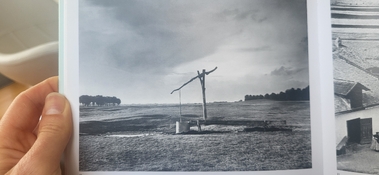On the contrary! Don't know how to explain it well, so again I resort to the words of my teacher about him

"Kertész offers us yet another lesson: that a great photograph does not have a subject — it is its own subject. And the further a photographer distances themselves from the surprise caused by real events, the more likely they are to create surprise through their photograph. Even further, this repetition has nothing to do with the typology so common in our times. The photographs of the square do not constitute related variations of a recognized subject. They are not offered for conceptual exploitation. Each one is a new attempt at something entirely fresh.
Once the sensitive viewer grasps this lesson, they can then comprehend the essence of this great photographer’s entire body of work. They realize that Kertész made real what we all dream of: to turn the whole world — consisting of squares and streets, snowy and sunny days, children, women, and men, plates, forks, pipes, eyeglasses, tulips, or chairs — into a photographed world, that is, an analytical world, and at the same time a world of our own, a synthetic one. Thus, transformation and revelation occur simultaneously.
Kertész managed to infuse his photographs — sometimes in one, sometimes in another, and sometimes simultaneously in the same image — with tenderness, playfulness, surrealistic approach, and daring composition. His photographs, regardless of their individual subjects, embody the adjective "Kerteszian": something that seems like a description but is also a suggestion; something recognized as real but at the same time feels as if it belongs to the realm of imagination; something perceived as natural, yet strikingly staged; a playful mind's creation born from simple observation."
Platon Rivellis - André Kertész: A Belated Confession









 And I somehow know that photography is something that gives a lot of joy to you too
And I somehow know that photography is something that gives a lot of joy to you too